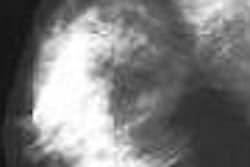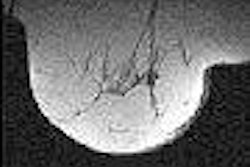Japanese women have an "extraordinary and unmatched" low rate of breast cancer recurrence after treatment, according to study in the International Journal of Radiation Oncology, Biology, and Physics.
Dr. Mark Kanemori and Maria Prygrocki initially set out to study general cancer outcome data at Kuakini Medical Center in Honolulu. Instead, the "remarkably low rates of cancer recurrence found in this study prompted evaluation of the prognostic factors unique to this (Japanese) patient population," they wrote (IJROBP, May 2005, Vol. 62:1, pp. 193-197).
Kanemori is from the center's department of radiation oncology; Prygrocki is from the department of oncology data registry. The data for their analysis were collected between January 1990 and December 2001.
Patients who had ductal carcinoma in situ (stage Tis), T1, or T2 tumors without metastases were included in this retrospective study. They were treated with lumpectomy and radiotherapy. The radiation dose for the majority of patients was 5,000-6,620 cGy.
As of 2003, 97.1% of the 896 patients had follow-up data available, with a median follow-up time of six years. The follow-up protocol included mammography, clinical breast exams, and CT scans, Kanemori told AuntMinnie.com in an e-mail.
The definition for local recurrence was based on the Commission on Cancer's Facility Oncology Registry Data Standards (FORDS) manual, which "excludes what the American College of Surgeons would consider second primary tumors," the authors wrote in the paper.
Kanemori and Prygrocki found that only six patients (0.67%) in the group experienced a local recurrence in breast cancer. In these six patients, the recurrence rate ranged from 24-89 months. For the 504 patients who were tracked for eight years, the in-breast local recurrence rate was 1%. Even when patients with ductal carcinoma in situ were excluded and only those with invasive disease were analyzed, the results remained unchanged for a local recurrence rate of 0.6% at six years and 1% at eight years.
"The predominant ethnicity of the patients treated at Kuakini Medical Center is Japanese, representing 74% of patients treated in this study," they wrote. "The findings are consistent with other studies reporting unusually low rates of breast cancer recurrence in patients of Japanese ancestry. The biologic factors associated with this population of patients should be explored in future studies."
Those biologic factors include diet, body mass index (BMI), parity, and breast density, Kanemori told AuntMinnie.com, as well as genetic profiles, estrogen receptor/progesterone receptor analysis, environmental factors, and ethic background (Japanese versus Hawaiian-Japanese). Kanemori stated that his team plans to continue following these patients.
The same factors that may help Japanese women beat breast cancer may also put them at lower risk for the disease. A 2003 study found that the Japanese diet -- high in milk, green-yellow vegetables, soy products, fish, and green tea -- offered protective effects among postmenopausal women (International Journal of Cancer, November 1, 2003, Vol. 107:2, pp. 276-282).
However, a more recent study determined that the incidence of breast cancer among Japanese women has increased substantially because of shifts in reproductive trends. As in the West, Japanese women are having children at a later age, thereby increasing their breast cancer risk, stated the researchers from Nagoya University Graduate School of Medicine in Nagoya, Japan (Cancer Science, January 2005, Vol. 96:1, pp. 57-62).
By Shalmali Pal
AuntMinnie.com staff writer
May 5, 2005
Related Reading
Eating beans may stave off breast cancer, April 7, 2005
Building BMD naturally -- soy far, soy good? March 25, 2005
Copyright © 2005 AuntMinnie.com



















